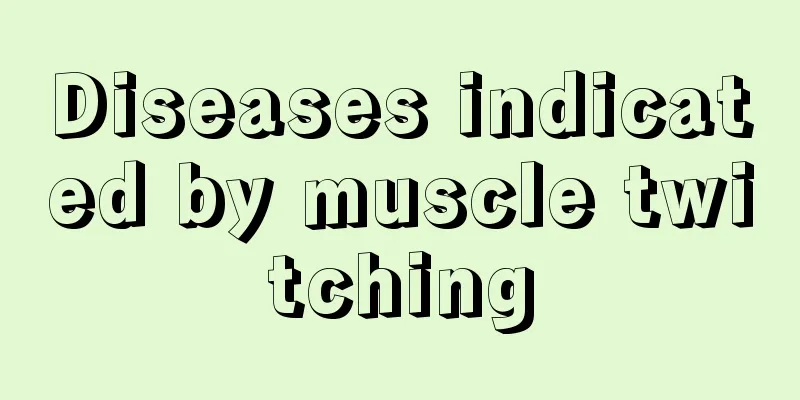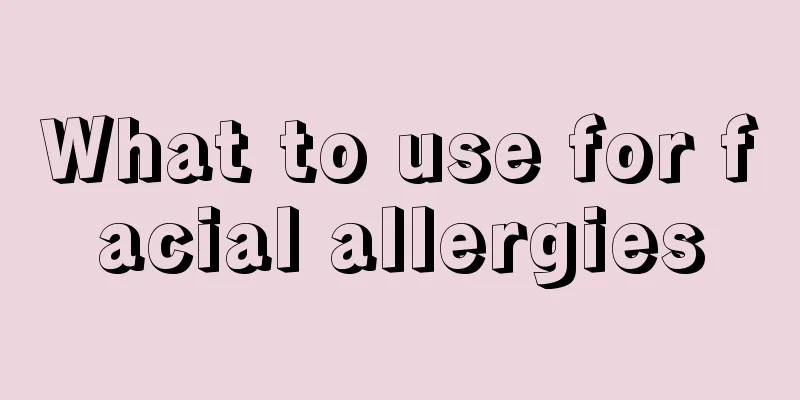Diseases indicated by muscle twitching

|
It is normal for muscles to twitch occasionally, and it is more likely to occur after heavy exercise. However, if muscle twitching occurs frequently, we should pay attention to it. Muscle twitching can indicate many diseases. We should have a full understanding of diseases with such characteristics, figure out our physical condition as soon as possible, and take good measures to solve them. So, what diseases does muscle twitching indicate? Let’s take a look below. The most common causes of muscle twitching are muscle strain, muscle spasm and fatigue , and the diseases caused by muscle twitching in different parts of the body are different. If the muscles on one side of the face twitch, it is hemifacial spasm, which is usually caused by facial neuritis, irritation of the facial nerve, or the close relationship between small arteries and the facial nerve, which is caused by arterial pulsation stimulating the facial nerve. If the muscles in other parts of the face twitch, it may also be related to strain and fatigue. Causes Physiologic tremor Under certain conditions, most normal people experience a fine, rapid tremor in the hands when the arms are held straight forward. Intensification of physiologic tremor may occur with anxiety, stress, fatigue, metabolic disturbances (e.g., alcohol withdrawal, thyrotoxicosis), or the use of certain drugs (e.g., caffeine and other phosphodiesterase inhibitors, beta-adrenergic agonists, corticosteroids). Essential (benign hereditary) tremor A subtle to coarse slow tremor that usually affects the hands, head, and vocal cords. In 50% of cases there is an autosomal dominant factor. The tremor may be unilateral. The tremor is minimal or absent at rest, but can be triggered when the patient performs delicate movements and can be enhanced by any of the factors listed above that can enhance the physiological tremor. The incidence of essential tremor increases with age and is occasionally incorrectly referred to as senile tremor. Resting tremor in Parkinson's disease Tremors in Cerebellar Diseases Intention tremors (as seen in multiple sclerosis and other cerebellar efferent disorders) occur when the moving limb approaches the target. Supportive (positional) tremor is a coarse rotational tremor of the proximal limb, most noticeable when the patient tries to maintain a fixed posture or bear weight. Titubation is a coarse tremor of the head and trunk, also a supportive tremor, which is obvious when maintaining an upright posture and disappears when lying down. Asterixis is seen in cases of hepatic encephalopathy and other metabolic encephalopathy. It is a coarse, slow, non-rhythmic movement when the patient stretches his hands forward. Using electromyographic recordings, it can be observed that when the patient tries to maintain a fixed posture, intermittent electromyographic static electricity occurs in the muscles that resist gravity, causing asterixis; therefore, it is not a true tremor, but a myoclonic phenomenon, a negative myoclonus. Intention tremor and rest tremor may occur in Wilson disease (Wilson's disease - see Section 4). The most characteristic is rhythmic tapping of the distal extremities or flapping of the proximal extremities. |
<<: The difference between pulmonary nodule shadows and nodules
>>: What kind of disease is myositis
Recommend
Self-emotional control methods
None of us can live without emotions and feelings...
How to clean shells
In summer, people prefer to go to the beach to pl...
Are oranges high in potassium?
Potassium is a trace element needed by the human ...
Lip hair removal
When men reach a certain age, they will have many...
Why does white spots appear on aloe vera?
I believe everyone is familiar with aloe vera. Al...
What should you avoid in your diet for glioma
Brain glioma directly threatens the patient's...
The difference between vest line and mermaid line
I often hear that some people want to have a vest...
Is rice vermicelli rice noodles?
Rice noodles are not rice vermicelli. Although bo...
Why do I have diarrhea immediately after eating something greasy?
Some people will encounter this situation, that i...
Why are the whites of my eyes turning green?
Why do the whites of my eyes turn green? A person...
Will epidermal cysts disappear on their own?
Epidermal cyst is an abscess of benign skin appen...
What are the symptoms of gastric cancer
What are the symptoms of stomach cancer? Early ga...
Can ovarian tumors be cured?
Can ovarian tumors be completely cured? Ovarian t...
Is drinking ginger soup really effective for low-grade fever?
Everyone is accustomed to drinking some ginger so...
Is it okay to eat dried persimmons at night?
Everyone must have eaten fresh persimmons, which ...









